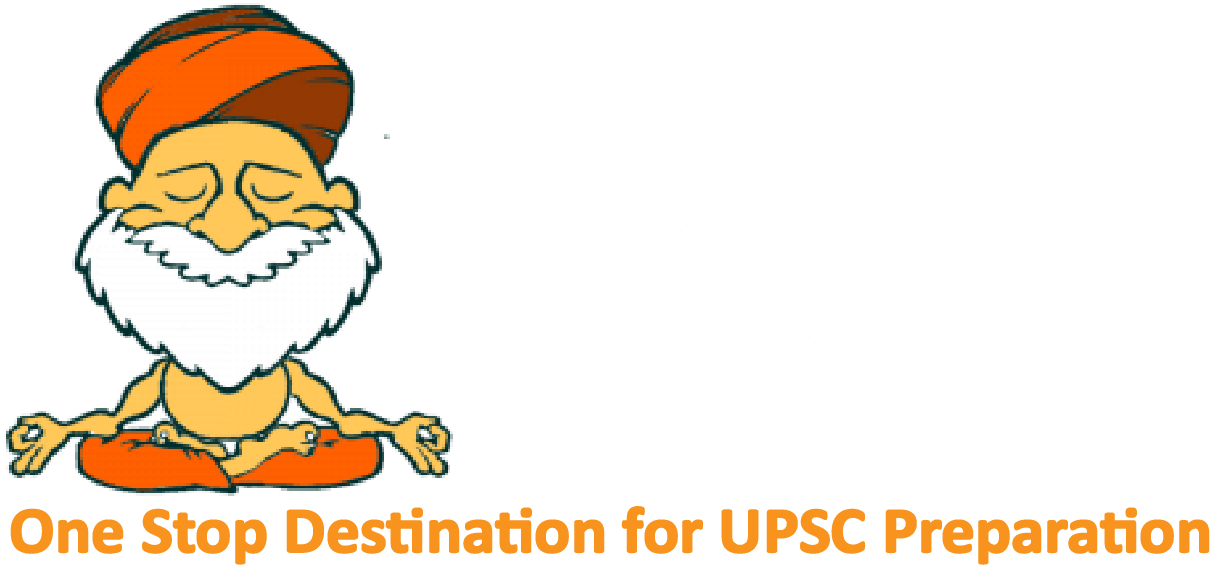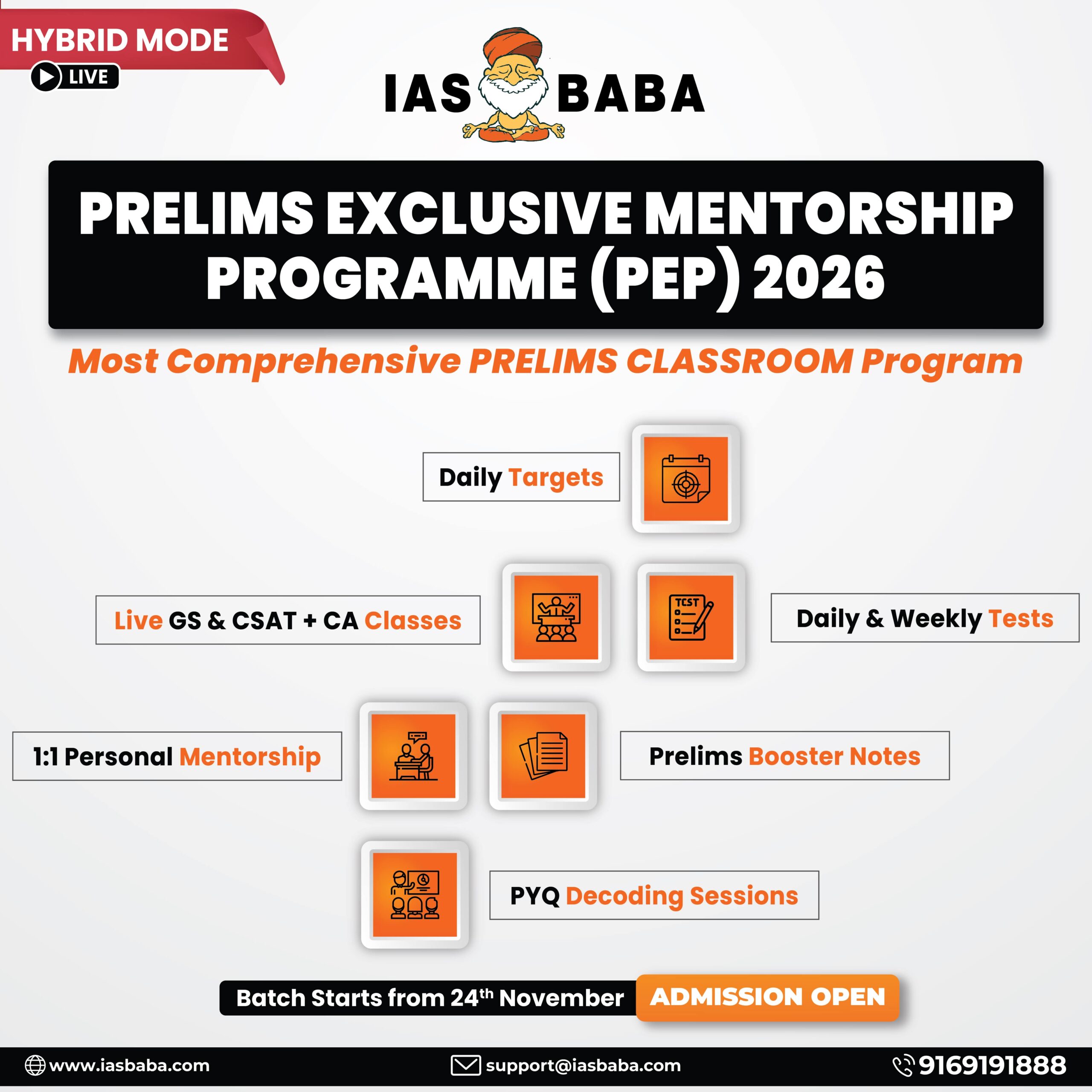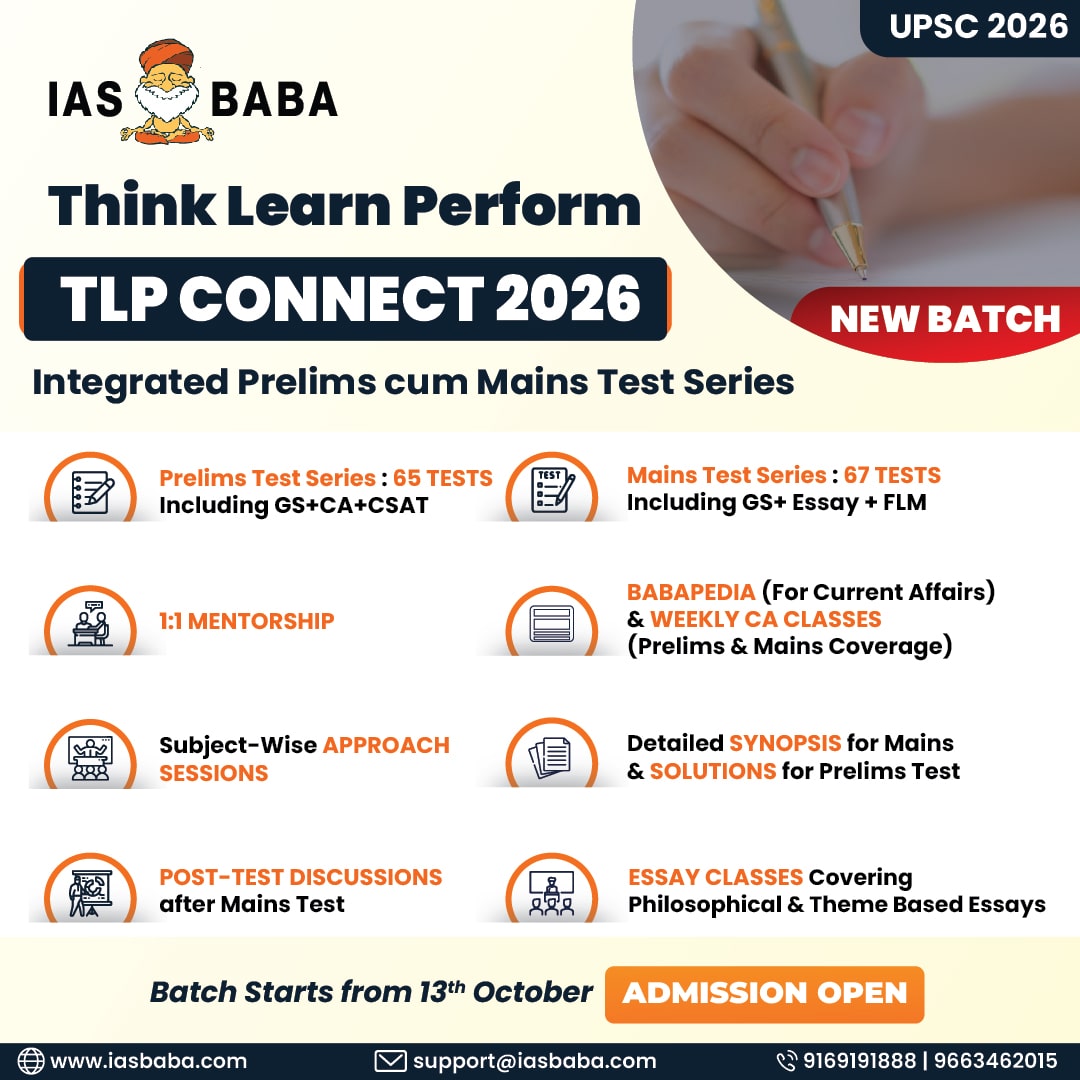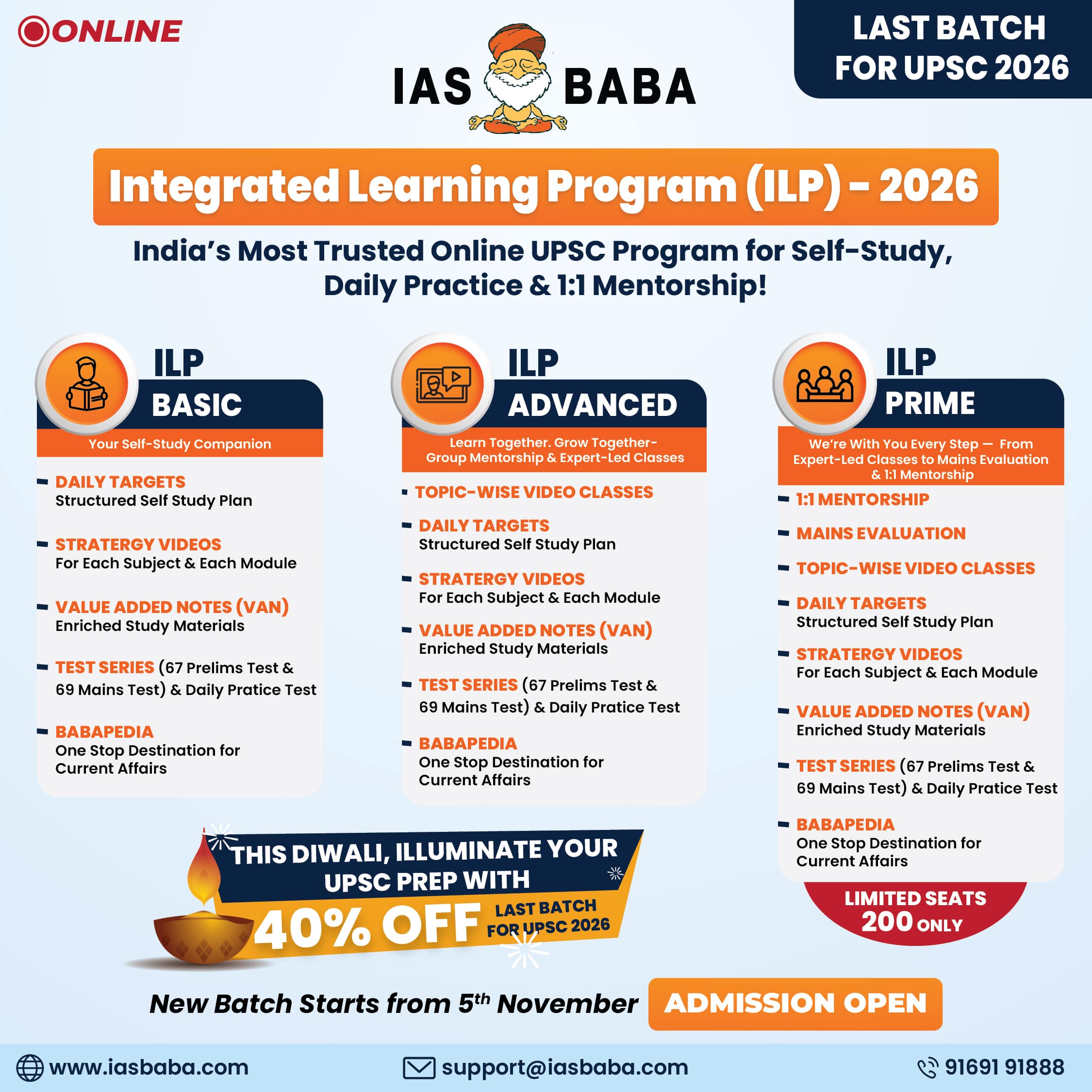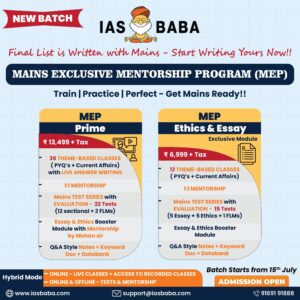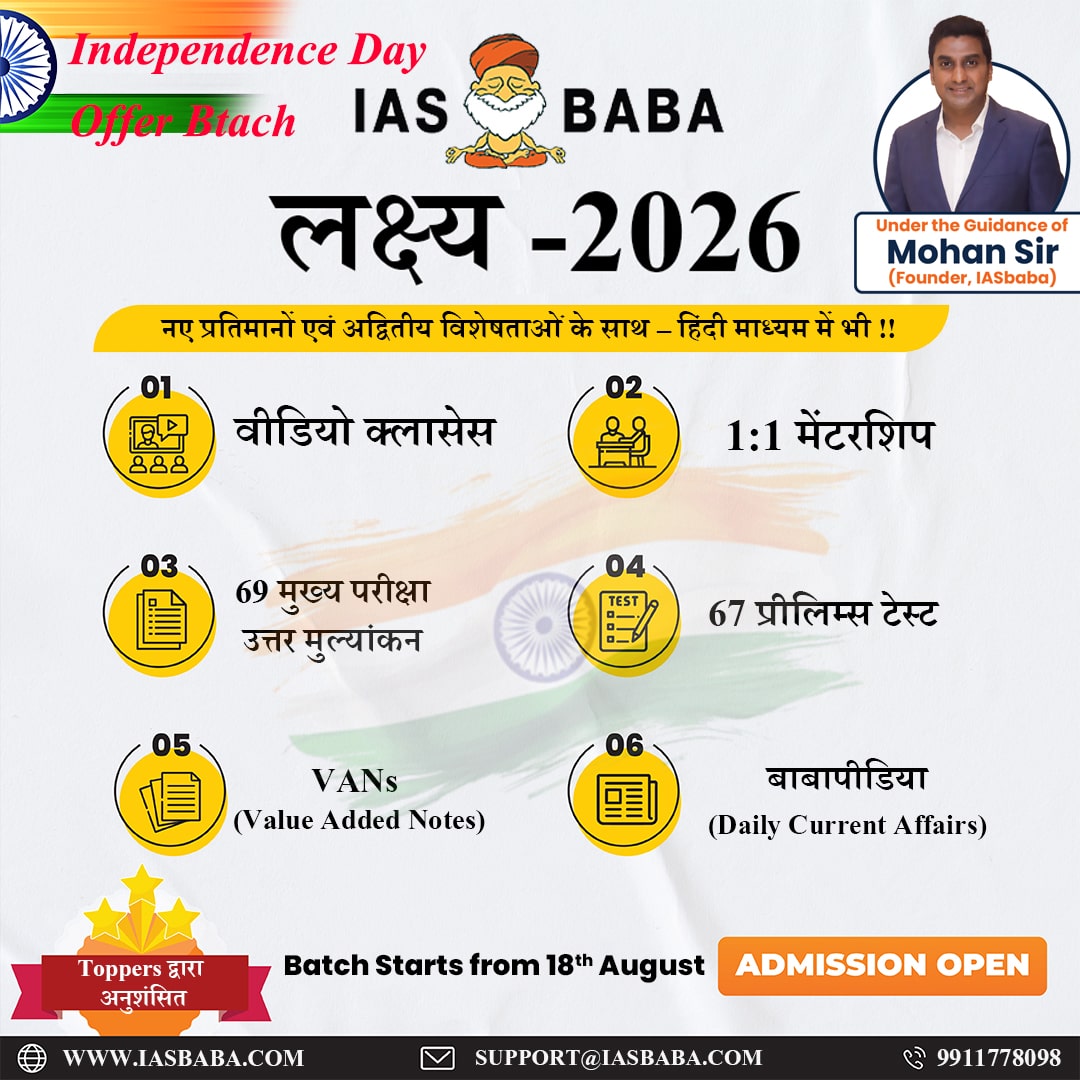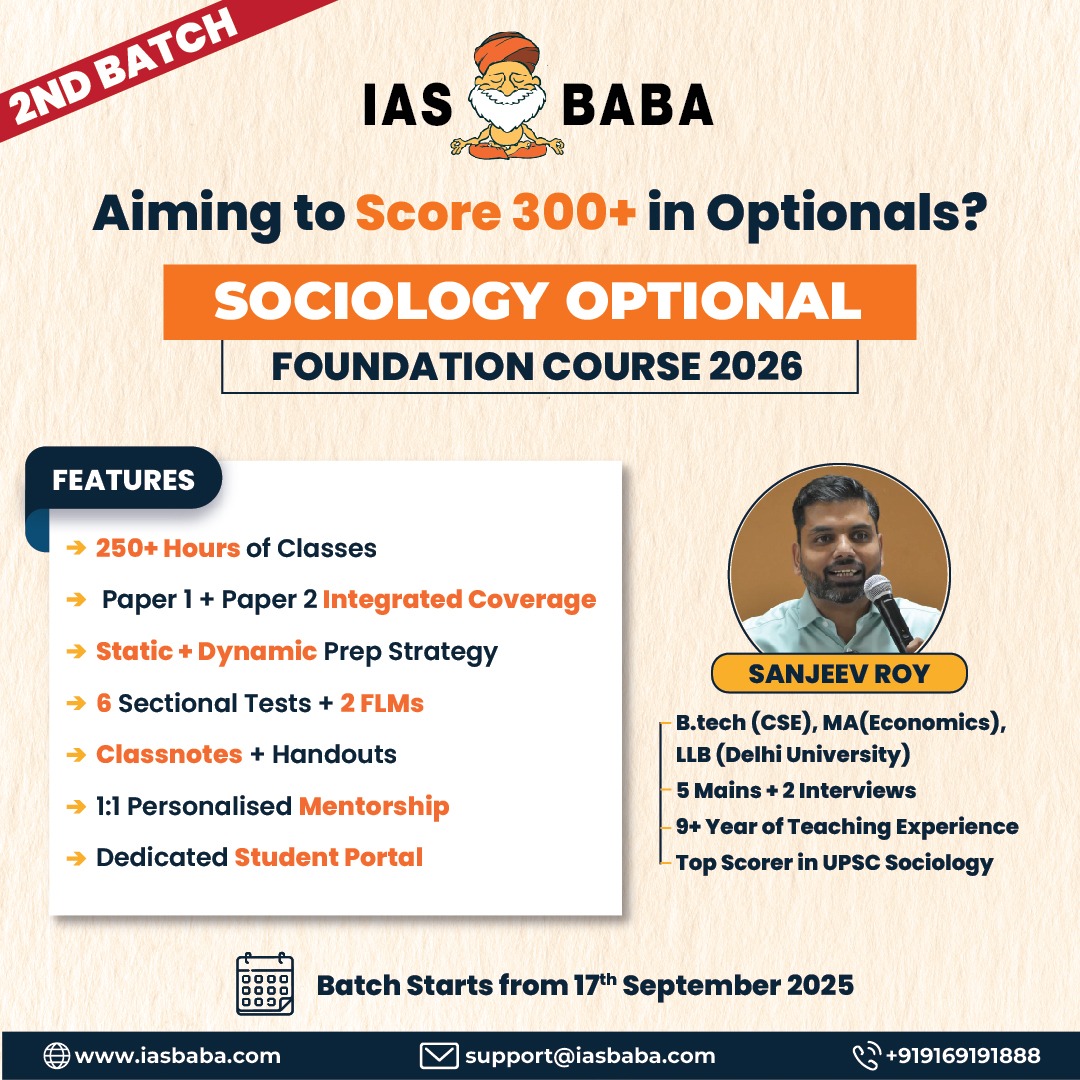IASbaba's Daily Current Affairs Analysis
Archives
(PRELIMS & MAINS Focus)
Category: ART & CULTURE
Context: The group of monuments at Lakkundi, and temples from surrounding places, dating from the early the 10th to 12th centuries CE and built during the period of Kalyana Chaluykas or Western Chalukyas, are in the process of being finalised for inclusion in the UNESCO’s tentative list of World Heritage Sites.
Decoding the context: Once approved, and on completion of an year under the tentative list, the State will be eligible to prepare a detailed nomination dossier for full World Heritage inscription.
The other heritage sites already under the tentative list include monuments and forts of the Deccan Sultanate, monuments of Srirangapatana island town, Hire Benkal megalithic site, and Badami and Aihole group of monuments.
Learning Corner:
- Lakkundi, historically known as Lokkigundi, is a village in Gadag district, Karnataka.
- Flourished under the Kalyana Chalukyas (Western Chalukyas) between the 10th and 12th centuries CE; later a capital of the Hoysala Empire (1191 CE under Veera Ballala II).
- A major economic and cultural center by the 10th century, known for minting coins (Lokki-pon inscriptions) and as an agrahara (center of learning).
- Lakkundi Temples : Over 50 temples and 100 stepwells (locally called kalyani) built during the Kalyana Chalukya period, showcasing Vesara architecture—a hybrid of Nagara, Dravida, and Bhumija styles.
- Key Temples:
- Brahma Jinalaya (1007 CE): one of the oldest temples in the region. It is a Jain shrine dedicated to Brahma and Yakshi Padmavati. The temple is made of soapstone and showcases intricate carvings.
- Kasi Visvesvara Temple: Most ornate, dedicated to Lord Shiva, features a 3 ft Shivalinga; walls depict scenes like Bhim and Arjun fighting Bhagadatta.
- Manikesvara Temple: Known for its exquisite stepwell (Musukina Bavi) with intricate carvings.
- Nanneswara Temple: Features polished, lathe-turned pillars reflecting Chalukyan craftsmanship.
- The stepwells like Musukina Bavi, Chateer Bavi, and Kanne Bavi are notable for their historical and architectural significance. These stepwells were integral to the temple complexes and played a key role in water management during the period.
- The inclusion of stepwells is significant, as they were essential for the arid regions of Karnataka, showcasing the region’s engineering and hydraulic knowledge.
Source : The Hindu
Category: NATIONAL
Context: India’s national safety regulator for large dams has found “irreparable damage” in the structure of three barrages that are part of Kaleshwaram Lift Irrigation Project (KLIP).
Decoding the context: In February 2024, four months after an incident of flooding at the biggest of the project barrages, the state government asked the National Dam Safety Authority (NDSA), a statutory body set up under the National Dam Safety Act, 2021, for a thorough inspection. The government made the NDSA’s findings and recommendations public this week.
Learning Corner:
- KLIP, on the Godavari River in Kaleshwaram, Bhupalpally, Telangana, is the world’s largest multi-stage lift irrigation project, inaugurated in June 2019.
- Redesigned from the Pranahita-Chevella project (erstwhile Andhra Pradesh), it spans 500 km across 13 districts with a 1,800 km canal network, divided into 7 links and 28 packages.
- Aims to irrigate 45 lakh acres, provide 30 TMC for Hyderabad’s drinking water, 16 TMC for industry, and 10 TMC for rural drinking water, sourcing 240 TMC total (195 from Medigadda Barrage).
- The project is estimated to cost around ₹80,000 crore (as per the initial estimates), making it one of the costliest irrigation projects in India.
Components
- Three major barrages: Medigadda (16 TMC capacity), Annaram, and Sundilla.
- Medigadda Barrage: A key feature of the project, constructed on the Godavari River, which is designed to lift water to higher elevations to serve the agricultural fields in Telangana.
- Pumping Stations: The project has a series of massive pumping stations at different stages to lift water.
- Canals: The project includes a vast network of canals, including the 1,832 km-long Kaleshwaram main canal and several branch canals, to deliver water across the region.
- Reservoirs: The project also has several reservoirs eg. Mallanna Sagar.
- The project lifts water 500 meters from the Pranhita-Godavari confluence using pumps, not gravity, to drought-prone northern Telangana.
Source : Indian Express
Category: ECONOMY
Context: In a move impacting millions of farmers and sugar mill workers, the Centre has approved an increase in the Fair and Remunerative Price (FRP) of sugarcane to ₹355 per quintal for the 2025-26 sugar season, up from ₹340 per quintal in the previous season.
Decoding the context: The decision, taken by the Cabinet Committee on Economic Affairs chaired by Prime Minister Narendra Modi aims to safeguard the interests of sugarcane farmers.
Learning Corner:
- FRP is the minimum price that sugar mills are legally required to pay sugarcane farmers.
- It is fixed under the Sugarcane (Control) Order, 1966, issued under the Essential Commodities Act, 1955.
- FRP replaced the Statutory Minimum Price (SMP) in 2009 to ensure more scientific, cost-based, and fair compensation. The shift was based on recommendations of the Rangarajan Committee (2012) on the decontrol of the sugar sector.
Key Features
- Determination: Fixed by the Cabinet Committee on Economic Affairs (CCEA) based on the Commission for Agricultural Costs and Prices (CACP) recommendations, considering production costs, sugar recovery rate, and market prices.
- Takes into account: Cost of production (A2+FL formula), Margin of profit (usually 50%), Sugar recovery rate (how much sugar is extracted from cane), Inter-crop price parity, Market price trends, Demand-supply situation.
- Applicability: Uniform across India; states can set a higher State Advised Price (SAP), e.g., Uttar Pradesh, Punjab.
- Payment: Mills must pay within 14 days of cane delivery (Sugarcane Control Order).
Significance
- India is the second-largest sugar producer globally after Brazil.
- Economic: Ensures stable income for farmers; sugarcane contributes 6% to India’s agricultural GDP.
- Social: Supports rural livelihoods; 80% of sugarcane farmers are small and marginal (land <2 ha).
- Policy: Aligns with doubling farmers’ income goal; complements ethanol blending.
Source : PIB
Category: SCIENCE & TECHNOLOGY
Context: Agriculture Minister Shivraj Singh Chouhan released two genome-edited varieties of rice, the first achievement of its kind in the country.
Decoding the context: Paddy is critical to India’s food security. The new varieties have been developed indigenously using cutting-edge technology.
Learning Corner:
- The two genome-edited varieties have been named ‘Kamala’ and ‘Pusa DST Rice 1’. They have better stress tolerance, improved yields, and climate adaptability without any compromises with their existing strengths.
Kamala (DRR Dhan-100)
- Developed By: ICAR-Indian Institute of Rice Research (IIRR), Hyderabad, from Samba Mahsuri (BPT 5204).
- Features:
- Targets the Cytokinin Oxidase 2 (CKX2) gene to increase grain numbers per panicle.
- 19% yield increase (5.37 tonnes/ha vs. 4.5 tonnes/ha for Samba Mahsuri).
- Matures 15-20 days earlier (~130 days), saving three irrigations (7,500 million cubic meters water across 5 million hectares).
- Retains Samba Mahsuri’s grain and cooking quality; suited for direct seeding, with drought tolerance and high nitrogen-use efficiency.
Pusa DST Rice 1
- Developed By: ICAR-Indian Agricultural Research Institute (IARI), New Delhi, from MTU1010 (Cottondora Sannalu).
- Features:
- Targets the Drought and Salt Tolerance (DST) gene, enhancing resilience to salinity and alkalinity.
- Yield increase of 9-30%.
- Tolerates harsh soil conditions, supporting cultivation in drought- and salt-prone areas.
- Maintains MTU1010’s long slender grains and early maturity.
- The ICAR have used CRISPR-Cas9 genome-editing technology, which won the Nobel Prize in Chemistry in 2020, to develop these two varieties.
- This technology enables scientists to make targeted changes in the native genes of living organisms, creating new and desirable traits without introducing foreign DNA.
- The two varieties are outcomes of Site Directed Nuclease 1 (SDN1) and Site Directed Nuclease 2 (SDN2) approaches under CRISPR-Cas9. Both approaches produce changes that mimic naturally occurring mutations and are non-transgenic in nature, meaning they do not involve foreign genetic material.
- As such, these genome edits are exempt from the stringent biosafety regulations under Rules 7-11 of the Environment (Protection) Act, 1986, which typically apply to genetically modified organisms (GMOs).
- The Institutional Biosafety Committees (IBC) of the concerned ICAR institutes approved the lines, and the Review Committee on Genetic Manipulation (RCGM) granted clearance for their classification under India’s relaxed regulatory framework for SDN1 and SDN2 edits on May 31, 2023.
Source : Indian Express
Category: GOVERNMENT SCHEMES
Context: India’s SVAMITVA scheme — a massive project to digitalise land records – will be in global focus at the World Bank Land Conference, taking place from 5th to 8th May at the World Bank Headquarters, Washington, D.C.
Decoding the context: This year’s World Bank Land Conference, themed “Securing Land Tenure and Access for Climate Action: Moving from Awareness to Action”, will bring together global leaders to explore strategies for securing land tenure, modernizing land administration for sustainable development and climate-responsive governance.
Learning Corner:
- Launched on April 24, 2020, by PM Narendra Modi, SVAMITVA (Survey of Villages and Mapping with Improvised Technology in Village Areas) is a Central Sector Scheme under the Ministry of Panchayati Raj to digitize rural land records and provide legal ownership rights to villagers.
- Covers villages across India, targeting inhabited areas (Abadi regions).
Key Features
- Technology: Uses drones and geospatial tools (e.g., CORS network with 5 cm accuracy) for high-resolution mapping, conducted by the Survey of India (SoI).
- Property Cards: Issues ‘Record of Rights’ to rural households; 24.4 million cards distributed across 1.6 lakh villages by May 2025, mapping 100 million property parcels.
- Gram Manchitra: A geospatial platform for village-level planning, aiding disaster risk mitigation, solar site selection, and rural infrastructure development.
Objectives
- Legal Ownership: Provides property cards to establish ownership, reducing disputes (e.g., 30% reduction in rural land conflicts, MoPR 2024).
- Economic Empowerment: Unlocks $1.162 trillion in land value, enabling access to institutional credit and monetization.
- Development Planning: Facilitates village-level planning for schemes like MGNREGA and PMGSY.
Significance
- Social Impact: Empowers women (40% cards in women’s names) and marginalized groups by formalizing land rights, aligning with SDG 1.4.2 (secure tenure rights).
- Economic Boost: Enhances rural financial inclusion; properties now collateral for loans, supporting Atmanirbhar Bharat.
- Governance: Improves tax administration and disaster preparedness through accurate land records.
Source : PIB
Practice MCQs
Q1. With reference to the Fair and Remunerative Price (FRP) of sugarcane in India, consider the following statements:
- FRP is fixed by the Commission for Agricultural Costs and Prices (CACP) and implemented by state governments.
- FRP replaced the Statutory Minimum Price (SMP) in 2009.
- FRP is legally binding on sugar mills across India.
Which of the statements given above is/are correct?
A. 1 and 2 only
B. 2 and 3 only
C. 1 and 3 only
D. 1, 2 and 3
Q2. Consider the following statements regarding the genome-edited rice varieties ‘Kamala’ and ‘Pusa DST Rice 1’:
- Both varieties were developed using the CRISPR-Cas9 genome-editing technique.
- The gene-editing used in these crops falls under the SDN3 category involving foreign DNA insertion.
- They have better stress tolerance, improved yields, and climate adaptability without any compromises with their existing strengths.
Which of the statements given above is/are correct?
A. 1 and 2 only
B. 1 and 3 only
C. 2 and 3 only
D. 1, 2 and 3
Q3. With reference to the SVAMITVA Scheme, consider the following statements:
- It is a Centrally Sponsored Scheme under the Ministry of Rural Development.
- It aims to provide legal ownership of property in rural inhabited areas through drone-based surveying.
- The Survey of India is the implementing agency for the mapping component.
Which of the statements given above is/are correct?
A. 1 and 2 only
B. 2 and 3 only
C. 1 and 3 only
D. 1, 2 and 3
Comment the answers to the above questions in the comment section below!!
ANSWERS FOR ’ Today’s – Daily Practice MCQs’ will be updated along with tomorrow’s Daily Current Affairs
ANSWERS FOR 3rd May – Daily Practice MCQs
Q.1) – a
Q.2) – b
Q.3) – b

